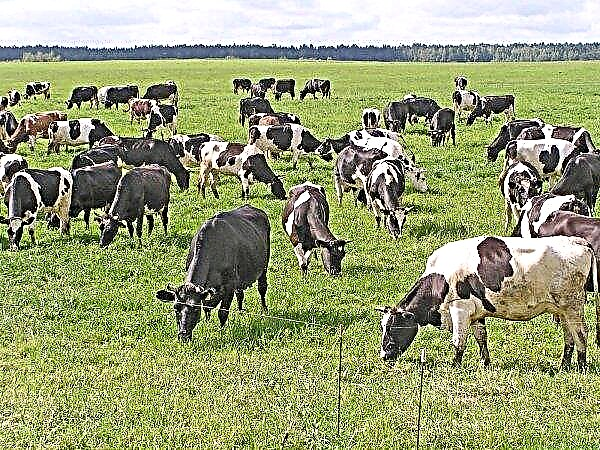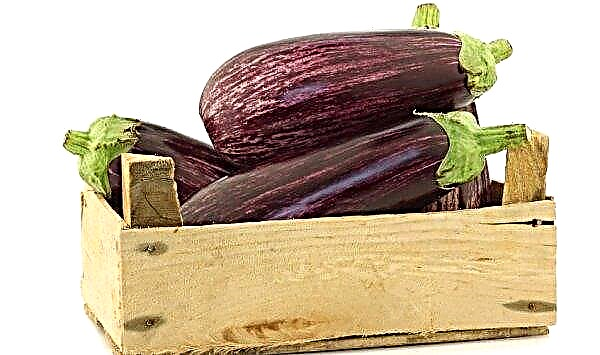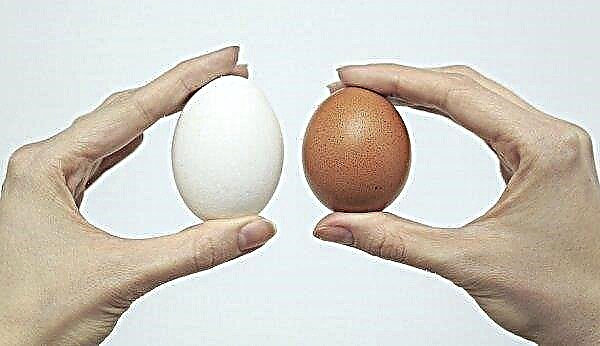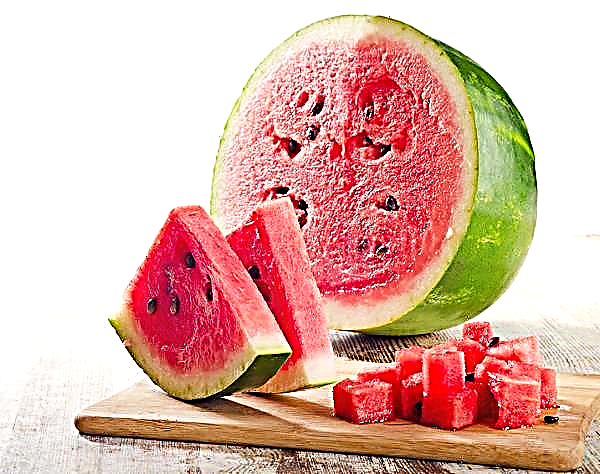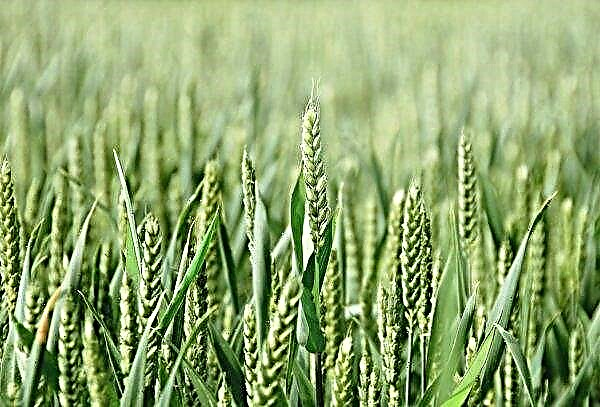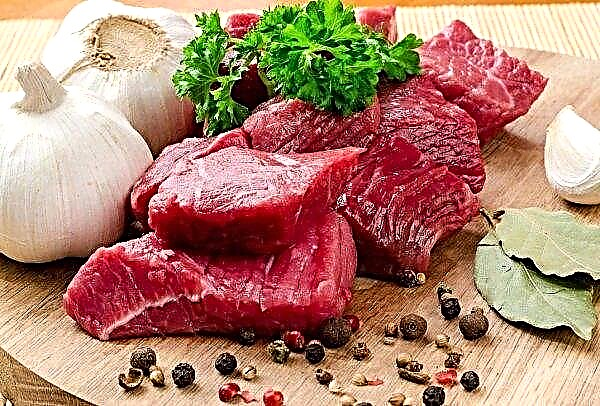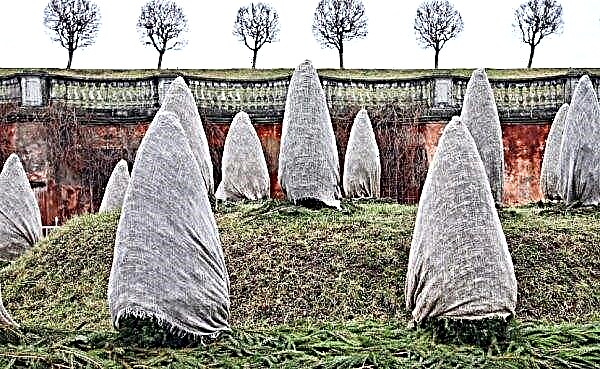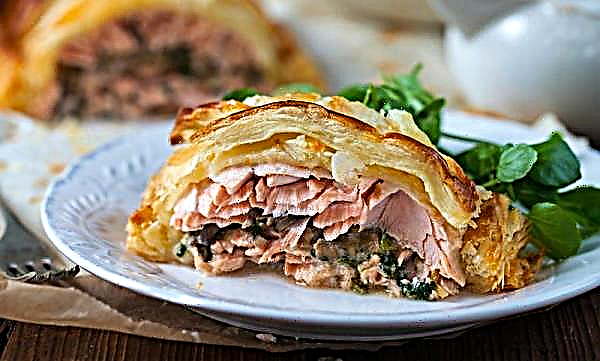Now in supermarkets and stores wheat bulgur is on sale. It can be found in the bulk products department. This cereal is a commonly used ingredient in many traditional oriental dishes. Read more about its properties and characteristics, cooking methods.
What is wheat bulgur
Choosing which cereals to prepare for dinner, it is worth considering options based on wheat. One of them is bulgur is an edible grain product that is obtained by steaming, drying, cracking and grinding whole wheat grains, mostly hard varieties (durum), but also other types. After the first stages of processing, the wheat is sieved to separate the grains by size. There are 4 types of bulgur based on how small or coarse grains are. The finer the grain, the shorter the cooking time. The mild nutty flavor and short cooking times make this nutrient-rich cereal a popular and versatile addition to the diet.
Chemical composition and calorie content
Bulgur contains a large number of useful vitamins and minerals. There is a large amount of fiber in these wheat grains. Bulgur is a particularly good source of manganese, magnesium, phosphorus and selenium. These wheat grains are rich in B vitamins, which help in the absorption of proteins, carbohydrates and fats. The iron contained in grains is necessary for the production of red blood cells, as well as for the synthesis of certain hormones, proteins and neurotransmitters. In addition, bulgur provides for a person a good dose of dietary fiber, which is necessary for digestion and normal heart function.
Important! In fact, one serving of boiled cereal provides more than 30% of the daily intake of nutrients.
Bulgur has fewer calories than other whole grains like brown rice or quinoa. In addition to vitamins and minerals, whole grains supply important plant-based antioxidants and phytonutrients. They also include phenols, hydrophilic and lipophilic compounds, which reduce inflammation and prevent free radical damage. These include phytoestrogens, lignans, plant stanols and sterols.
A portion of boiled bulgur (182 g - 1 cup) contains:
- calories: 151;
- carbohydrates: 34 g;
- protein: 6 g;
- fat: 0 g;
- fiber: 8 g;
- folate: 8%;
- Vitamin B6: 8%;
- niacin: 9%;
- Manganese: 55%;
- magnesium: 15%;
- iron: 10%.

Wheat Bulgur Production
The difference between bulgur and most types of wheat flour used in many packaged products is that it was not cleaned of bran. Due to this, many nutrients are stored in whole grains. Bulgur is usually sold "steamed." This means that a very small amount of cereal bran is partially removed, while maintaining the status of whole grain.
Types of cereals
It is made from durum wheat (durum) and is found in four common grindings: fine, medium, coarse and very coarse. The larger the grain, the longer it takes to prepare. When purchasing grain cereals of one or another grinding, you need to understand for the preparation of which dish it will be used.
For example, most varieties of satisfying pilaf are prepared from medium, coarse and very coarse grains of the Midyat bulgur. Lighter side dishes, such as taboule and kebbe, are made from thin grains. For the preparation of kyufta (kefte), it is better to take the finest grits. Some people like to use medium-crushed bulgur for cereals for breakfast (instead of oatmeal) or for making dense whole grain bread and other baked goods. Fine grain cereals are usually cooked within 5 minutes.
Effects on the human body
Bulgur is a whole grain with potential health benefits for the heart and intestines. It is indicated in diabetes as a food product that prevents cancer and weight loss. It boasts numerous health benefits, as it plays an important role in the prevention and treatment of certain diseases.
Beneficial features
This whole grain is low in fat and sodium. Bulgur is also a rich source of antioxidants and phenols, a group of protective plant compounds. Bulgur is rich in dietary fiber, oligosaccharides and resistant starch. Their presence favorably affects the work of the intestine. Whole grains help soften stools and prevent constipation.
 The oligosaccharides and resistant starch found in bulgur are carbohydrates that act as prebiotics, enhancing the growth and activity of healthy bacteria in the gut. A healthy intestinal microbiome (a unique set of microorganisms) has a profound effect on health and can improve immunity, metabolic processes in the body and reduce inflammation.
The oligosaccharides and resistant starch found in bulgur are carbohydrates that act as prebiotics, enhancing the growth and activity of healthy bacteria in the gut. A healthy intestinal microbiome (a unique set of microorganisms) has a profound effect on health and can improve immunity, metabolic processes in the body and reduce inflammation.
This whole-grain product has a high fiber content, therefore, it controls the blood sugar level, enhancing the action of insulin, and has a beneficial effect on intestinal health. Whole grains improve satiety after eating, helping to control appetite.
The impressive level of magnesium in this grain makes it an excellent sleeping aid because the trace element can influence the production of certain relaxing neurotransmitters. Those who suffer from insomnia can try to add bulgur wheat to their diet and consume it for several weeks. Then, the changes associated with sleep will be noticeable.Important! According to some studies, adding just 1/2 a cup of bulgur to your daily diet can lower your blood sugar and turn off your hunger hormones.
General benefit
Bulgur is an excellent source of essential minerals for the body. It provides 2.11 mg or 55.5% of the daily value of manganese (per 1 cup). The manganese contained in the product is necessary for the normal functioning of the nervous system and brain. It helps in the formation of connective tissue and the proper coagulation of blood. One cup of boiled cereal provides 48.24 mg or 15.6% of the total magnesium needed. Bulgur helps lower the risk of high blood pressure. The nutritional value of bulgur makes it an important grain for maintaining overall health. Bulgur is an ideal choice for a first meal. One serving of boiled cereal contains 11% of the recommended daily allowance for protein and contains 18 essential amino acids. These are pretty good indicators to provide the body with the necessary substances. One serving also contains 11% of the recommended daily intake of complex carbohydrates and 33% of daily fiber requirements. There is no cholesterol in bulgur.
Bulgur is an ideal choice for a first meal. One serving of boiled cereal contains 11% of the recommended daily allowance for protein and contains 18 essential amino acids. These are pretty good indicators to provide the body with the necessary substances. One serving also contains 11% of the recommended daily intake of complex carbohydrates and 33% of daily fiber requirements. There is no cholesterol in bulgur.
The minerals found in wheat are important for many organs, but the product is especially good for improving bone strength. With age, the mineral density in bone tissues naturally decreases, so people need to have enough phosphorus, manganese, iron in their bodies to keep their bones healthy and prevent osteoporosis. This wheat delivers these minerals in high concentrations, making cereals a powerful stimulant for strengthening bones. Scientific studies have shown that cereals can help prevent colon and breast cancer.Did you know? Around 2800 BC e. Chinese emperor Shen Nung declared wheat one of the five sacred crops along with rice, millet, barley and soy.

During pregnancy and breastfeeding
Maternity Diet is a smart, balanced, and healthy baby-centered diet plan. Instead of focusing only on your needs, you need to consider the growing needs of the baby. This is important because proper nutrition during pregnancy minimizes unpleasant symptoms (toxicosis) during this period and prevents complications from childbirth.
Important! The daily intake of boiled cereals for a woman expecting a baby, — 1/2 cup.
Whole grains are especially important for expectant mothers and their growing children, because they struggle with nausea, constipation and drops in blood sugar, which lead to headaches, fatigue and mood swings in mothers. They also provide the baby with essential nutrients, including vitamins B1, B2, folic acid and niacin. Grains provide energy for the development of the child and help the growth of the placenta. Bulgur is a good source of folate, which is important for creating red blood cells, and is also a key vitamin in preventing neural tube defects in children during early pregnancy.
It is very important that the mother eat right after childbirth and that breast milk contains all the nutrients, vitamins and minerals the baby needs. When breastfeeding, be sure to include bulgur in your diet to provide the best nutrition for yourself and your baby.
Did you know? Biblical references indicate that bulgur was first prepared by the ancient Babylonians, Hittites and Jews about 4000 years ago, and Arab, Egyptian and Roman civilizations ate dried boiled wheat as early as 1000 CE.
For children
Thanks to an increase in whole grain intake, there is a 50% reduction in the risk of developing asthma in children. The antioxidants found in bulgur, as well as vitamins C and E, act as respiratory tract protection and reduce shortness of breath. This type of cereal is rich in iron, and therefore helps prevent iron deficiency anemia - a common problem among children.
In general, children aged 4 to 6 months are ready to eat solid foods. Within a few months after the start of eating such a meal, the daily diet of the child should include a variety of foods, including wheat-based. However, you need to know that bulgur can cause allergies, since wheat grains contain gluten.
There are 2 types of negative immune responses to wheat:
- Classical food allergy. Includes symptoms such as urticaria or shortness of breath immediately after the child has eaten food made from wheat.
- Celiac disease. Typical symptoms include abdominal pain, diarrhea, irritability, poor weight gain, and slow growth. Celiac disease can occur soon after the child receives his first meal with wheat cereal. In some cases, the symptoms are minor. For many years, you may not know what this disease is. The diagnosis can only be made in adolescence or even in adulthood.
 Bulgur is a useful base for food, ideal for serving with meat and vegetable sauces. Useful cereals can be offered to children aged 9-12 months.
Bulgur is a useful base for food, ideal for serving with meat and vegetable sauces. Useful cereals can be offered to children aged 9-12 months.For weight loss
Bulgur is used as a healthy diet for effective weight loss. And this is important because everyone knows that excessive body weight increases the likelihood of a heart attack, stroke, diabetes, gout, gallstones and cancer. This type of cereal gives a feeling of satiety due to the high concentration of fiber and protein, unlike oats, buckwheat or corn. In addition, its quick cooking time, a small amount of calories and a mild taste make bulgur ideal for those who decide to resort to a whole-grain diet to lose weight.
After eating boiled cereal, satiety remains for a long time. Fiber contained in the cereal increases the volume of the stool and, thus, helps defecation, which contributes to weight loss. Protein content also contributes to weight loss. This is due to the fact that he needs more time to digest. Thanks to the protein, the metabolism is accelerated and the level of the hormone of hunger called ghrelin is reduced.
Possible harm and contraindications
Since bulgur is a wheat product, it should not be consumed by people who are allergic to wheat or with gluten intolerance.Gluten is a protein that is found in all products from wheat, rye and barley. It can cause serious allergic reactions in people with intolerance and those who have digestive problems. Bulgur is practically safe. However, increasing your intake of whole grains on a daily basis can increase the incidence of constipation and bloating. This is a common side effect that can occur due to a daily increase in fiber.
Some people with chronic intestinal disorders, such as inflammatory bowel disease or irritable bowel syndrome, bulgur may not tolerate due to the content of insoluble fibers in it. It is worthwhile to introduce high-fiber foods in small doses to avoid exacerbation of the disease.
Cooking recipes
Bulgur cooking is easy. For cooking, use the traditional method, cook in a slow cooker, in the oven. Croup should not be digested. Serve ready-made porridge for salads or on their own. Optionally served with berries, raisins or dried cranberries. Before serving, you can sprinkle porridge with fresh herbs.
Bulgur is used for cooking casseroles, soups and desserts. Beef is used to make tartar with fine-grained cereals, medium grinding is taken for cooking for salads such as tabule. Larger grain sizes are suitable for pilaf and soups.
Classic recipe

410 minutes
wheat bulgur medium grinding
1 tbsp.
Nutritional value per 100 g:
- To boil water.
- Add bulgur (rinsing under running water) and oil to the tank. Mix well and let it boil.
- Cover the pan, reduce heat to a minimum. Cook for 10-12 minutes.
- When the cereal becomes soft, remove the pan from the heat and allow to cool for some time.

For children

1 10 min.
wheat bulgur medium grinding
50 g
Nutritional value per 100 g:
- Boil water (can be halved with vegetable broth).
- Rinse the medium-sized cereal under running water. Pour it into boiling water. Allow to boil, tighten the fire to a minimum.
- Add olive oil. To mix everything.
- Cover the container to reduce evaporation, and simmer until completely absorbed.
- Stir the porridge 1-2 times during cooking.

For breakfast

2 15 minutes
wheat bulgur medium grinding
½ tbsp
milk 1% fat
250 ml
Nutritional value per 100 g:
- In a small saucepan, mix bulgur (pre-rinsing), milk, salt and sugar.
- Boil.
- Reduce the heat to medium and cook, stirring often, until the croup thickens and becomes soft, 12-15 minutes.
- Add milk or water if necessary.

In a slow cooker

410 minutes
wheat bulgur medium grinding
200 g
black pepper, curry
taste
Nutritional value per 100 g:
- Rinse the groats under running water, pour into the bowl of the multicooker. Salt, add spices to taste.
- Pour in water, pour in olive oil.
- Close the lid and the steam release valve. Select mode - buckwheat / cereal, value 8 min. In the "pilaf" mode, the cooking time is 10 minutes.

Cosmetology Applications
For many centuries, women have tried some bizarre do-it-yourself cosmetic treatments. Now, fortunately, there is no need to apply disgusting or potentially deadly ingredients to the skin. Inexpensive cosmetic procedures can be made from safer ingredients.
Did you know? Geisha used nightingale litter for face and body beauty, the English nobility did rejuvenation procedures with the help of puppy mercury and urine. Cleopatra used sour donkey milk.
For scrub, you can mix 1 tsp. sugar, 1 teaspoon bulgur fine-grained (raw), a pinch of baking soda or ½ teaspoon chilled coffee grounds. Such a remedy can be used to cleanse the skin of the face, as well as for problem areas on the body. As an anti-inflammatory agent, ½ part turmeric is mixed with 50 ml of yogurt, 2 tbsp. honey and half a glass of fine-grained bulgur and spread over clean skin. A similar tool is suitable for dry skin, and for an irritated face. The procedure is done for 15 minutes.
Scrubs are often used for problem areas of the body.. Based on bulgur, you can prepare a skin cleanser. Fine grits should be mixed with any cosmetic oil and massaged in problem areas. To rejuvenate aging skin, make a mask for 12 days after taking a bath. Fine-grained bulgur - 1 tbsp. and quail raw egg. The procedure should last 10-15 minutes.
How to choose and store cereals
Bulgur should be well packed and tightly closed. Before buying, you need to check the label and find the expiration date or sale date, and choose the latest. If the cereal has a musty or oily smell, it means that it was not properly stored or transported. Grains should look good and have a slightly sweet flavor or be odorless in general. Wheat groats should be stored in an airtight container, protected from moisture, light and heat.

The pantry can be stored for up to 24 months. The remaining cooked porridge will remain in the refrigerator for up to three days. Storage in the freezer is quite acceptable. Imagining how you can experiment with bulgur, dozens of ideas come to mind: warm cereal cereals in the morning instead of oatmeal, quick improvised salads for lunch with vegetables, side dishes in the form of pilaf, masks and scrubs for face and body . Indeed, bulgur is an ideal seed for many purposes.


